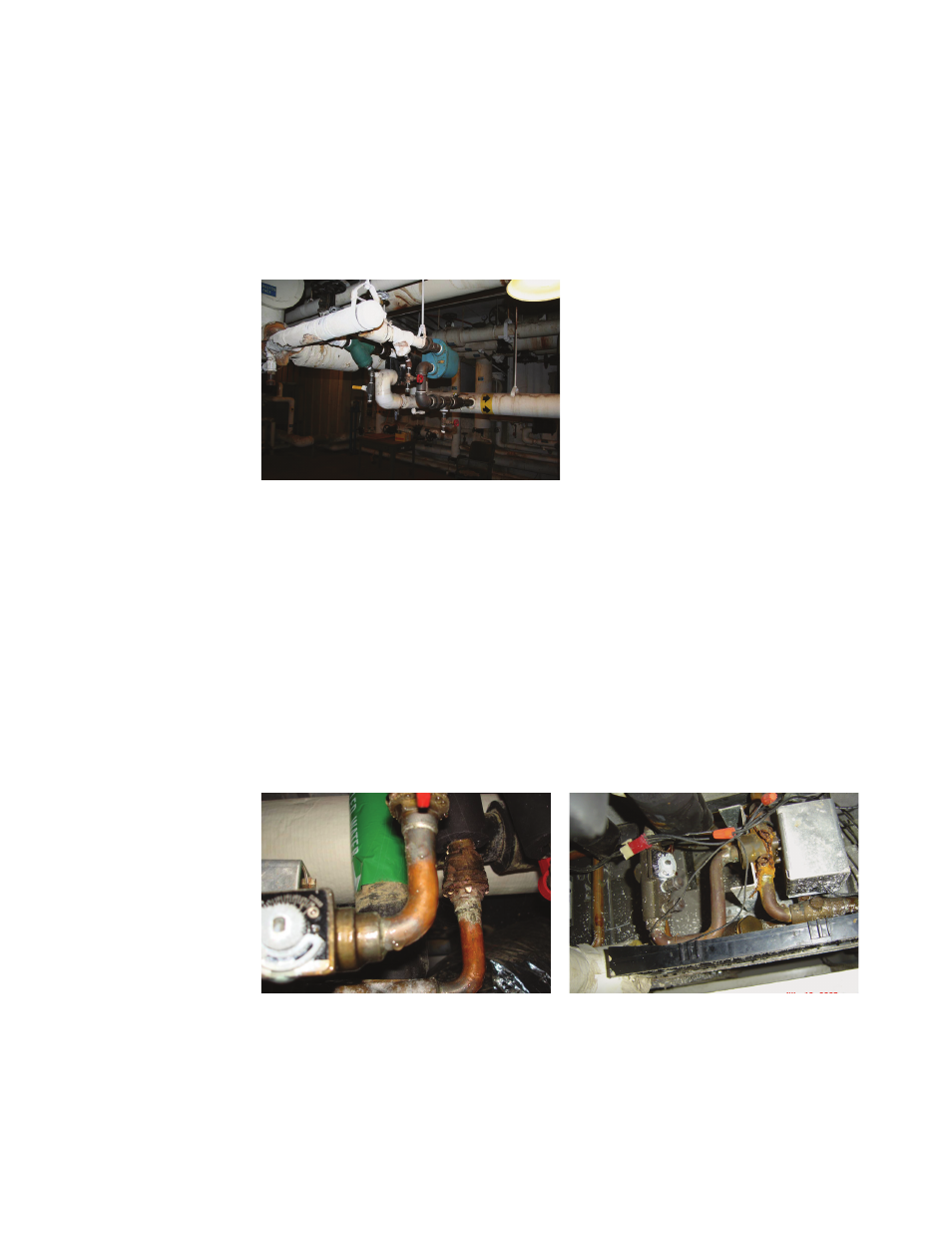Retrotec USACE User Manual
Page 166

D36 ENERGY & PROCESS ASSESSMENT PROTOCOL
body, causing burns or worse. Leaks of superheated steam are not visible and
can be very dangerous. The expansion and contraction a steam system experi-
ences as it is started and shut down can stress the piping components, resulting
in leaks. The amount of energy lost by a leak is dependent on the system pres-
sure and the leak size. A 6-mm (0.25-in) diameter leak will result in a steam
waste of 0.075 Btu/min (75 pounds/hr) in a 206.8 kPa (30 psig) system.
D.2.3.12 Steam Traps Not Maintained (Waste)
Figure D60. Steam trap downstream of heat
exchanger that requires periodic checking for
proper operation.
A steam trap is a device that allows condensed steam to pass but stops steam
fl ow (Figure D60). Over time, the internal parts will fail, which can result in the
trap failing in either the closed or open position. If it fails closed, then steam
will not fl ow to the heating device, and it will stop heating. If the trap fails in
the open position, the heating device will continue to function, but additional
steam will be lost through the trap opening or orifi ce. The trap orifi ce size can
be obtained from the trap manufacturer. They typically range in diameter from
0.8 to 12 mm (1/32 to ½ in). A leak through a 3-mm (1/8-in) orifi ce is equal to
almost 0.015 Btu/min (15 pounds/hr) in a 206.8 kPa (30 psig) system.
D.2.3.13 Chilled Water Pipes Do Not Have Suffi cient Insulation
(Ineffi ciency)
Figure D61. Condensation and rust on bare pipes connected to fan coil units.
When chilled water pipes have no (or insuffi cient) insulation to prevent con-
densation (surface temperature is below the dew point) and there is no or
